Key Points
Contents
- 1 Key Points
- 2 Reviewing Septic System Documentation
- 3 Tools and Safety Precautions
- 4 Probing Methods and Patterns
- 5 Excavation Considerations
- 6 When to Dig
- 7 Reducing Yard Damage
- 8 Ground Penetrating Radar (GPR)
- 8.1 Advantages of GPR
- 8.2 Limitations and Best Practices
- 8.3 When to Call a Professional
- 8.4 Challenges and Complexities
- 8.5 Expertise and Equipment
- 8.6 Services Offered by Septic Professionals
- 8.7 Locating and Inspection
- 8.8 Recommendations and Reporting
- 8.9 Marking the Location for Future Reference
- 8.10 Temporary Markers
- 8.11 Permanent Solutions
- 8.12 Importance of Accessibility
- 9 Frequently Asked Questions (FAQ)
• Check Your Home Blueprints: Look at your house’s blueprints or inspection reports to find where your septic tank is. These should have a map showing where the system is.
• Yard Signs: Keep an eye out for a patch of grass that’s greener, sunken spots, or bare areas which could point to your tank’s spot. Also look for vent pipes or manhole covers that could be a giveaway.
• Get Help: If you can’t find it, think about hiring someone who knows their stuff. They’ve got gear like detectors and probes that can find the tank without wrecking your lawn.
Before you start digging up your yard, do some homework first. Knowing what you’re doing saves time and effort.
Reviewing Septic System Documentation
Pull up any records you have about your septic system, like building permits, design plans, or past inspections. They’ll have info on where and how big your system is. You might have to go to town offices or the health department to get these.
If you’ve got blueprints of your place, they’re super helpful for finding your tank. They’ll show its position related to your house. Give them a good look-over if you can get them.
Maintenance and Installation Records
Search for any old papers from when they fixed or put in your septic. Receipts, service logs, or bills will have useful bits about your system and what’s been done before. Keep these filed somewhere – they’re handy not just now but for later maintenance too.
Identifying Common Septic Tank Locations
There are usual places and depths for septic tanks based on rules and house setup:
- Distance From Home: They’re not right next door to homes — that’d be risky. But they won’t be too far either so they can link to the sewage pipes.
- Typical Setterihg: They tend to be 10 to 25 feet away from homes, at depths decided by local climate and soil type.
When you know where tanks usually go, you cut down on pointless digging.
Finding out exactly where your buried tank won’t involve excavation if you know how to look right:
Signs of the Septic Tank Location
You can often guess where a septic tank is if you see certain things on the ground. Look for lines in the dirt or grassy areas hinting at the tank’s shape. The aftermath of past repairs might leave signs too.
Inspection Ports or Risers
Newer septic tanks might have ports or risers — these make checking the inside way easier with no need to dig. They stick out a bit on the lawn so you can tell them apart from other things out there.
Varying Grass Growth or Color
If the grass is looking weirdly lush or dead over where the tank might be, there could be issues underneath. Lush green could mean leakage, while browner spots might signal problems with the drainage field.
Following the Sewer Line
The pipes heading from your house to the septic tank can guide you to it. Start at where the house’s sewer leaves off, and guess a straight shot towards where the tank could be hidden. Places with little to no plants can indicate buried pipes, as roots don’t like them. Small pipes sticking out might mark places for getting access to the sewer line.
Just by watching out for these hints, owners and pros can figure out where a septic system is and how it’s doing without having to dig around blindly.
If you can’t find written evidence or it’s confusing, you’ll need a hands-on approach. Know roughly what your system is like before probing or shoveling so you don’t bust anything important.
Probing for the Septic Tank
If all else fails, gently poke around with a long rod in places where you think the tank could be hiding. It’s a simple way of locating it without causing major damage.
Tools and Safety Precautions
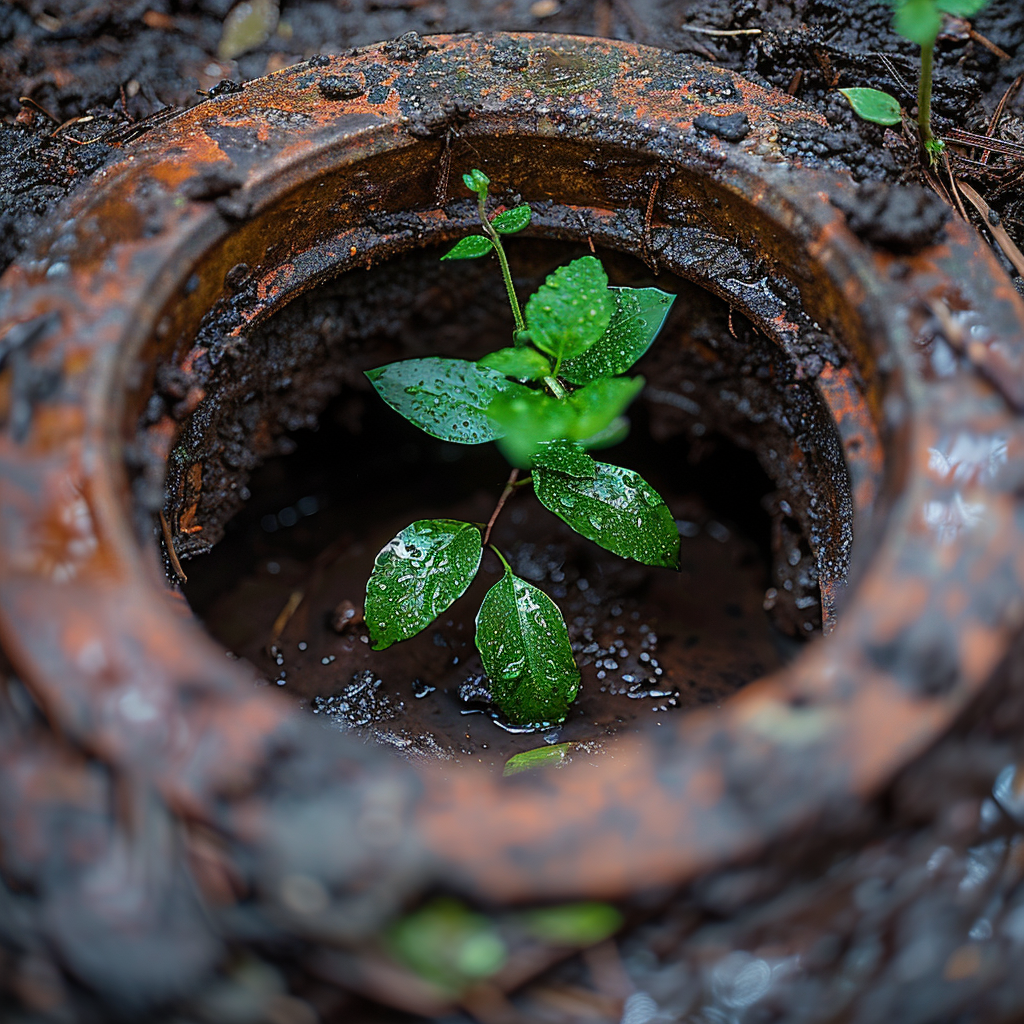
To find a septic tank, grab a metal probe – think soil probe or something just as tough. You might also need a shovel for a bit of digging. Don’t forget safety gear; gloves and solid boots are a must to keep you safe while you work.
Probing Methods and Patterns
When you probe, follow a clear method. Begin at the house and push out in orderly lines. Make sure you keep the same distance between each spot where you probe, so you can search the whole area well. Be careful not to jam the probe down too hard, because if you do, you could bust underground pipes or mess up the tank.
Excavation Considerations
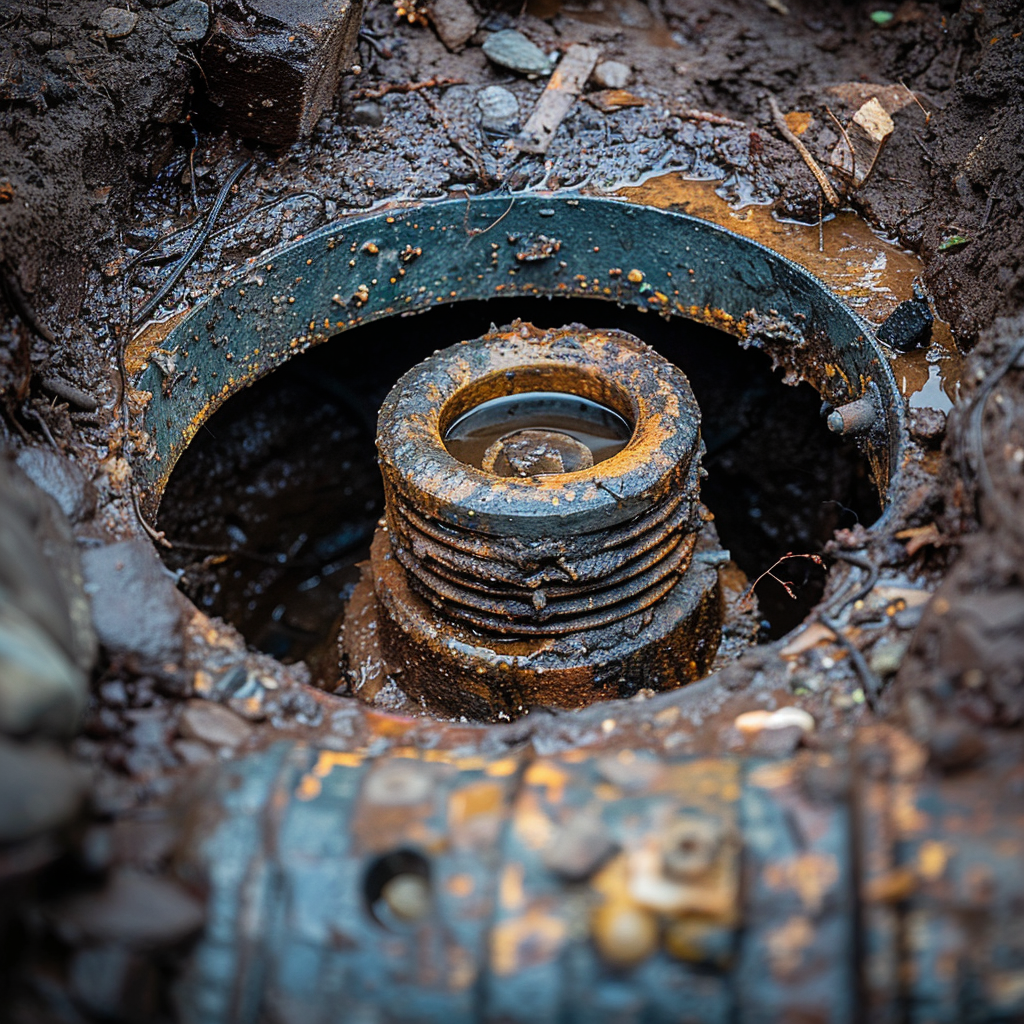
Digging might be necessary if your search points to a potential spot for the septic tank. You should be careful when you start this process. Use shovels to gently uncover the tank so you don’t cause any harm to it.
When to Dig
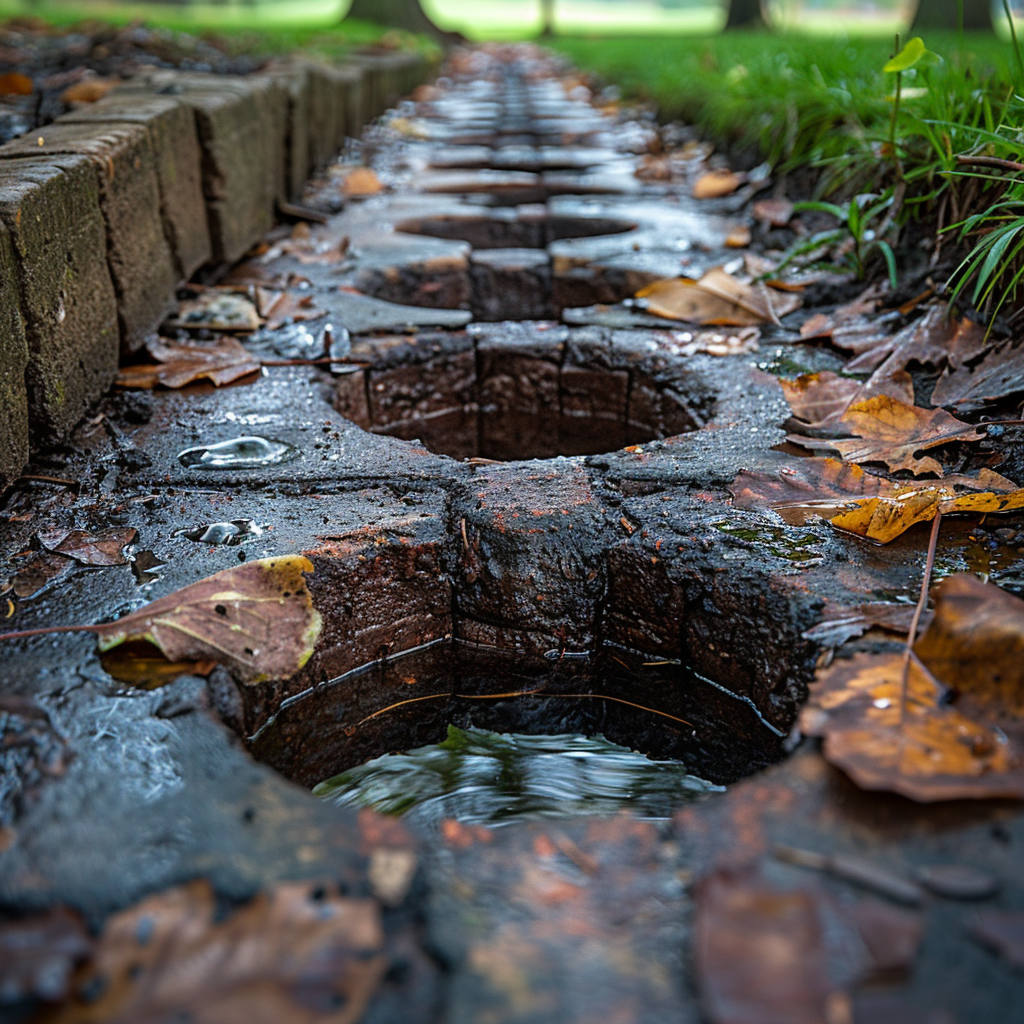
Only start digging after you’ve tried all other methods that don’t involve disturbing the ground. Choose a time when the weather’s good. Try not to dig when it’s freezing because that makes the soil hard to move and you might break the septic system.
Reducing Yard Damage
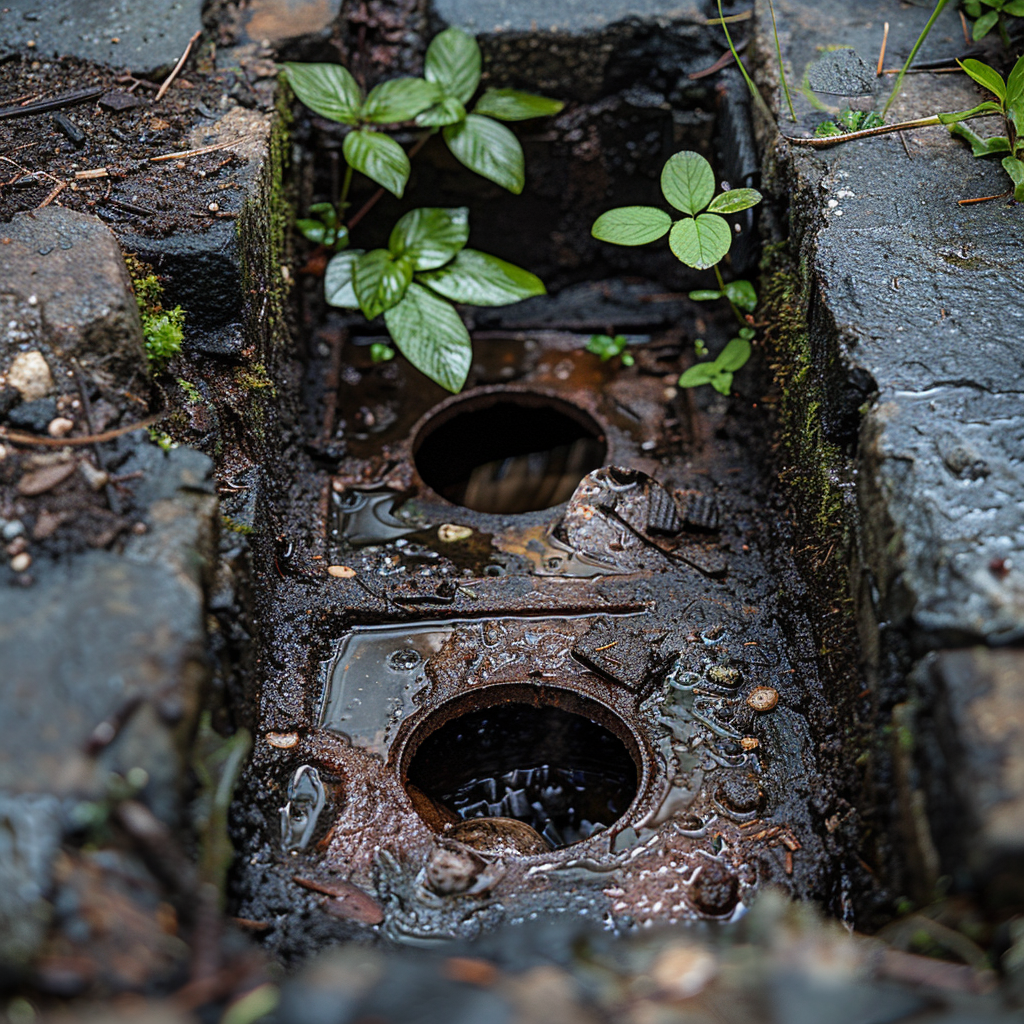
To keep damage to your yard to a minimum while searching:- Gently probe before you dig.- Dig by hand if you must.- Put back the soil and grass when you’re done checking or fixing things.
Finding exactly where a septic tank is can be tough without the proper equipment. But thanks to tech upgrades, we’ve got tools that make this hunt much more precise and efficient. Two common tools for finding septic tanks are electronic locators with metal detectors, and another thing called Ground Penetrating Radar (GPR).
Using Electronic Gear and Metal Finders
When you need to find a septic tank that’s undergound, using electronic locators with metal detectors can really help out—especially if the tank is metal or has metal parts. How well they work depends on stuff like what kind of dirt you’ve got, how deep the tank is buried, and if there’s other metal junk close by.
Different Kinds and How Good They Are
You’ll find all sorts of electronic locators and metal detectors on the market. Some are easy to carry around, while others are bigger but can scan deeper down. These gadgets’ success relies on whether they can tell the difference between your tank and other metal bits in the ground.
How To Use ‘em
If you want to use these devices right, start by getting rid of big metal stuff nearby that might mess with the signal. Then sweep the device over the area, nice and methodical-like. You’ll hear beeps or see the needle jump on the display to let you know when you might’ve found your target. This helps point you towards where the tank probably is.
Ground Penetrating Radar (GPR)
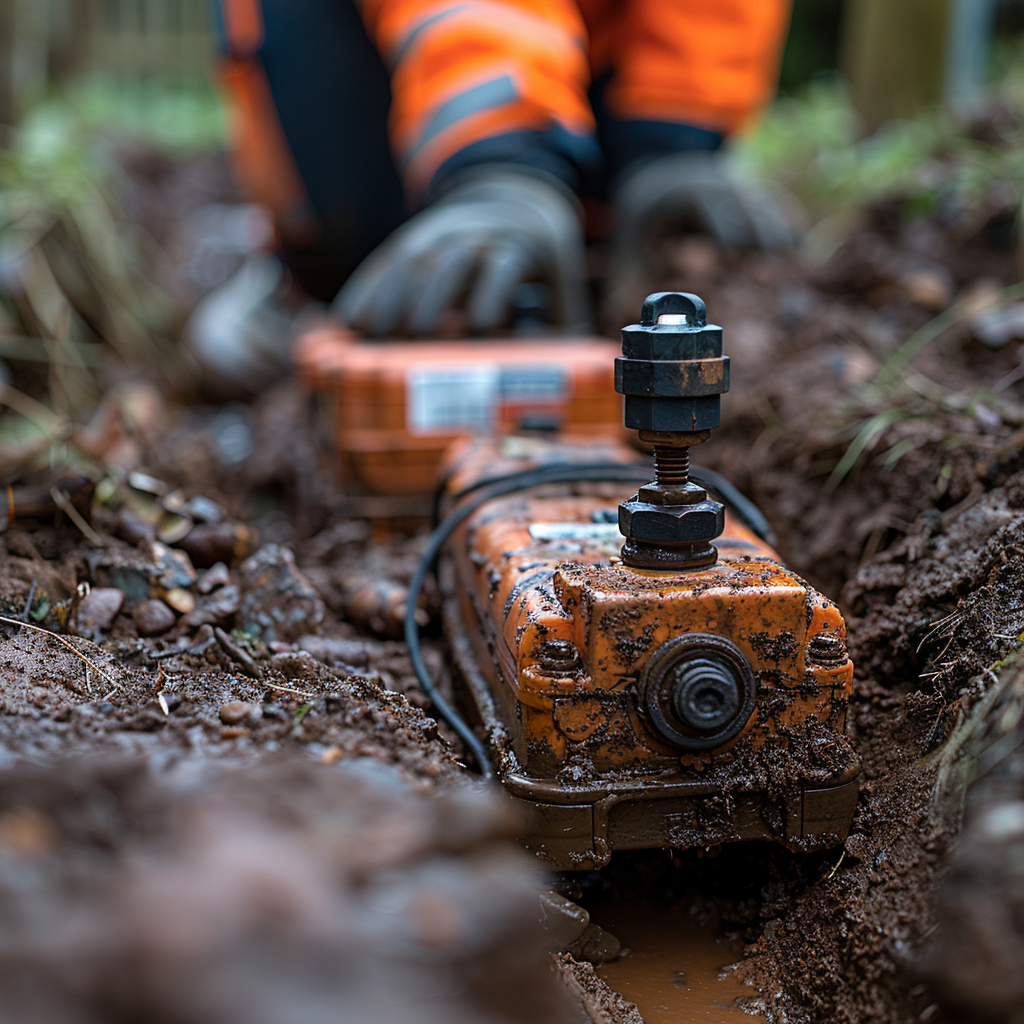
Thanks to its high-tech capabilities, Ground Penetrating Radar is a reliable way to find septic tanks. This device sends out radio waves into the ground and measures the waves that bounce back to reveal what’s below the surface, which can include things like non-metal tanks.
Advantages of GPR
GPR offers several key advantages:
- It surveys the ground without digging, keeping your property intact
- It finds more than metal, like plastic and concrete materials
- Its images are clear, so understanding what’s under the ground is easier
Limitations and Best Practices
However, GPR isn’t perfect. It struggles in soils that conduct electricity well, such as clay, or ones filled with water. For the best results, use it when the weather’s good and the soil’s dry. Also, you’ll need someone skilled at reading GPR data to correctly locate parts of the septic system.
In summary, picking the right technology, whether electronic locators or high-tech GPR, is important for finding septic tanks correctly. This helps keep them working well and protects the environment.
When to Call a Professional
If your septic system is causing trouble, deciding when to call an expert can be tough. Look for signs like slow drains, bad odors, wet spots near your tank, or weird noises in your pipes. If you see any of these signs, or for ordinary maintenance, get professional help to sidestep bigger issues.
Challenges and Complexities
Septic systems can be tricky. DIY repairs aren’t recommended due to their complexity and health risks. Professionals know these systems inside out and can handle them safely.
Expertise and Equipment
Specialists in septic systems have special tools and skills to find and fix problems properly. They know how to use big machinery needed to dig up your yard to reach the septic system if required.
Services Offered by Septic Professionals
Experts offer services like cleaning, fixing, pumping, and inspections—all vital to keeping your septic system running smoothly. They’ll also be able to locate your septic tank for you.
Locating and Inspection
Tracking down the exact spot of a septic tank can be hard, especially in older homes where records may not be available. Experts have specific ways to find tanks and carry out thorough checks using tech like camera probes to look at the system’s condition with little digging.
Recommendations and Reporting
After checking your system, pros will give advice tailored to your situation. They’ll also give detailed reports on your septic system’s health and list any necessary repairs or maintenance steps for its longevity and performance.
Keeping your septic system in check is key for waste management that actually works. Good access to your septic tank makes this easier. Let’s look at ways to keep access simple.
Marking the Location for Future Reference
First things first: mark where your septic tank is so you can find it quickly later on. It’s not a fairytale adventure but mark it down with a map or sketch, anything simple will do.
Temporary Markers
Till you decide on something permanent temporary markers like bright flags or stakes are useful. Don’t forget to replace them before they wear out or become a fixture.
Permanent Solutions
To make things last; consider long-term options. A small marker in your garden, landscaping tweaks aimed at easy access or special in-ground devices are reliable indicators of your tank’s location
Importance of Accessibility
Why bother with easy access? Imagine needing urgent fixes when friends and family are visiting. It’s a headache you don’t want. So remember where it’s at and ensure it’s approachable for quick fixes.
Frequently Asked Questions (FAQ)
Can landscaping cues aid in pinpointing a septic tank's location?
Yes, landscaping cues can certainly be helpful in finding a septic tank. Homeowners often shape their yard’s landscape to accommodate the space needed for a septic system tank. For instance, if there’s an area without any trees or deep-rooted plants, this could suggest the presence of a septic system beneath. Likewise, a patch of grass that differs in color or growth rate might indicate the location of your tank, as sewage effluent can alter soil nutrition and therefore vegetation appearance.
Is it beneficial to check tax assessor records for septic tank info?
Absolutely, checking tax assessor records is a smart move when searching for your septic tank details. These records often include diagrams showcasing the septic system’s layout relative to the property. This can give homeowners like those involving in Country Living Experience: A Homesteading Journey or My Cluttered Garage – Outdoors valuable insights. Furthermore, understanding your septic system installation permits and inspection report could save you from having to hire professional help unnecessarily, preserving both time and money.
What are Gary Iverson's tips for DIY septic tank locating?
Gary Iverson suggests several DIY methods for septic tank locating. One commonly endorsed approach involves following the sewer line from where it exits your house—usually found in the basement or crawlspace—toward the likely tank location. You can also look for visible risers or lids at the ground level which provide access for septic maintenance. Always keep in mind that Gary advises caution and recommends calling a professional if you encounter any uncertainties during your search.
What role do health departments play in septic system records?
Health departments maintain significant roles in keeping records of septic systems. These governmental bodies usually require permits for septic system installations and have documentation that can include detailed layouts of these systems. Accessing these records can offer precise location information and reveal specifics about the system’s configuration. Homeowners should request such information from their local health department—it’s a key step that can eliminate guesswork in locating their septic system.
How can probe tools assist in identifying a tank under soil layers?
Probe tools are designed to penetrate through different soil layers to detect variations in the ground resistance, which can signal the presence of a septic tank. As you probe around the general vicinity where you suspect the tank to be, a sudden decrease in resistance usually denotes a change from soil to the possibly looser material covering the tank or even the tank itself. Soil types and various climatic conditions can affect how easy or difficult it is to feel these changes with probe tools.
Are there signs within my home indicating a specific septic tank location?
While no direct clues inside your home will pinpoint the exact septic tank location, elements such as where the sewer pipe exits your house or where inspection ports are located can provide hints. For example, knowing that all waste lines from toilets, showers, and sinks converge to a main drain line gives you a starting point—follow this line outward from your house toward the potential tank location. Be aware of other parts of your septic system, like vent pipes, which may also lead you toward the general area.
Why is it important to be cautious when using a metal locator over concrete or fiberglass tanks?
Using a metal locator over concrete or fiberglass tanks requires caution because these tanks won’t be detected by standard metal-detecting devices due to their non-metallic nature. Misidentifying your search target could lead to wasted effort or even unintentional damage to your yard. If your household has concrete or fiberglass tanks, seeking professional assistance might be more practical; professionals possess specialized electronic locators designed for such cases.
What circumstances would make it necessary to call for professional septic help?
Professional help becomes necessary when homeowners face complexities in locating their septic systems due to insufficient records, unidentifiable landscaping features, or simply when they’re not equipped with proper tools and knowledge. Proficient septic service providers have access to sophisticated equipment like ground penetrating radar (GPR) which identifies tanks and drain fields irrespective of their material composition—like in ‘Stuart On Septics’ Episode where expertise alongside apt equipment yielded accurate results.
Could knowing my home's construction year help find my septic system?
Recognizing the year of construction for your home can provide vital background information in your search for the septic system location. Construction date correlations dictate common practices of that era including typical distances from home to tank, preferred materials used for components like risers and baffles, as well as standard septic system diagrams—even-handedly guiding customers closer to revealing their concealed sewage treatment assets without ever lifting a shovel.

I’m Tim Robberts, a seasoned wastewater treatment & septic system expert with over 40 years of experience in the field. My career began as a septic tank installer, and I quickly gained a reputation for my attention to detail and commitment to excellence. Over the years, I’ve honed my skills in designing, installing, and maintaining septic systems for residential and commercial properties.
